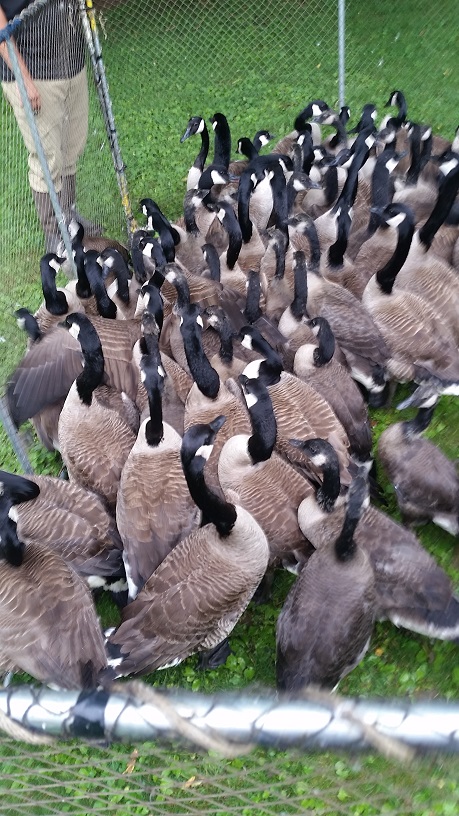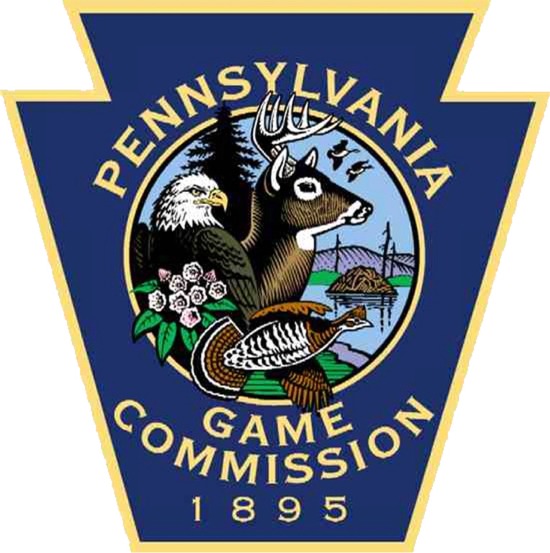[Comments in brackets by Jeannine and Duane]
From the Northern Crew:
We wrapped up fawn capture last week, but the crew still had their hands full.
On Monday, we attended the necropsy examination for all our fawns that have died so far this summer. Most of the fawns we provided were probably predated upon by black bears. Although the DNA analysis will later provide the last piece of the puzzle for the final decision to be made.
The whole crew really enjoyed learning about the methodology that goes into fawn necropsies. It was very interesting to learn how one determines what predator is responsible for each kill, or whether a predator was even involved. In many cases, fawns often die naturally from abandonment or illness.
Our freezer wasn’t empty for long. We added three this week. One was presumably a bear kill as large amounts of vegetation was matted over, bear scat was found near the carcass, and vomit (indicative of a bear kill) was also found near what was left of the fawn. 
Another fawn appeared to be a natural mortality, potentially stemming from abandonment; the crew noted that it appeared to be emaciated. However, the necropsy and DNA analysis are the only way to know for sure.
The crew was also fortunate to assist our black bear wildlife biologist aide, Brandon with bear capture this week. One of the bears was a massive 378-lb male. Another was a sow captured in previous seasons, but she had four cubs with her this time!
The remainder of the week was spent performing telemetry and monitoring our remaining fawns. Another great week for the Northern Crew.
PGC Deer and Elk Section
From the Southern Crew:
Hello all,
This week, we kept busy with fawn locations, assisting with bear trapping, and goose banding. We also managed to capture two more fawns. One weighed in at a healthy 8.3 pounds. A wonderful addition to our captures at this point in the season. Cute as a button, too!
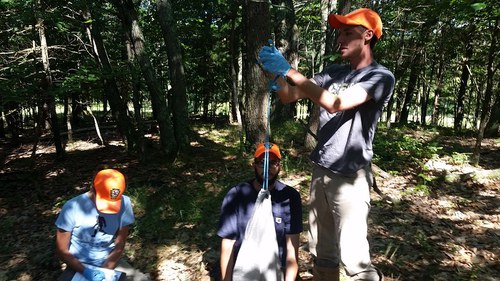
The following day, Nick and I went on a search for the second fawn of the week in the same area. He was of similar size to the fawn we caught the day before. Unfortunately, this little guy was not in great condition. He was still very lively, but was underweight and was seemingly uncared for.
Because of his spunk, we decided to give him the benefit of the doubt. We cleaned him up as best as we could, collared him and sent him on his way. He was very vocal, so we had hopes that the doe would relocate him. Although it was a tough capture, we’ve got to be prepared to deal with it since it’s not uncommon to come across this in the wild.
The crew conducted three mortality investigations. The first was on the day that fawn necropsy was scheduled. Avery and Ben took the liberty of conducting this investigation and bringing him to the necropsy session. It was determined by Justin, the PGC wildlife vet, to be coyote predation. The second fawn was found mid-week with only the hide and skeleton still intact. The third was found underweight and covered in maggots.
On a more positive note, Nick and I saw our first ever Eastern Hog-nosed Snake! We also found an Ovenbird and Killdeer nests. Avery and Amber saw a piebald deer, as well! And Susan, a blog follower and fawn capture volunteer, shared a picture of one of our collared fawns with us.
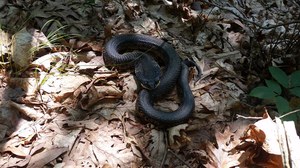
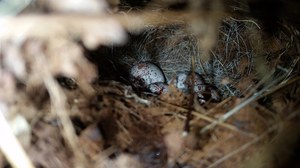
We had a number of comical run-ins with larger fawns this week. While searching, we kicked up two monstrous fawns. The first jumped up and ran away from us. The second jumped up when we were next to it, but we brought the net down one second too late and just missed it. We ran down the road at a doe and a fawn who didn’t even know we were there. And even had a fawn run up to the truck, sniff the air, and take off back towards its mom.
Some of the crew assisted with bear trapping and got to see a few recaptures. We were recruited to help band geese on Friday since the banders were shorthanded. We helped capture and band nearly 200 geese.
Next week, we are diving into fence work and helping Nate finish up his second session of bear trapping. We are also hoping that those darn VITs will drop! For now, it feels like “see ya later” to fawn capture. It’s been a great run. My crew, the troopers that they are, worked their butts off. For me, I’m grateful to be a part of all three years of the fawn survival study. Fawn capture has been the most satisfying and rewarding part of all my field jobs combined. It’s hard not to like miniature white-tailed deer.
Field Crew Leader
If you would like to receive email alerts of new blog posts, subscribe here.
And Follow us on Twitter @WTDresearch
